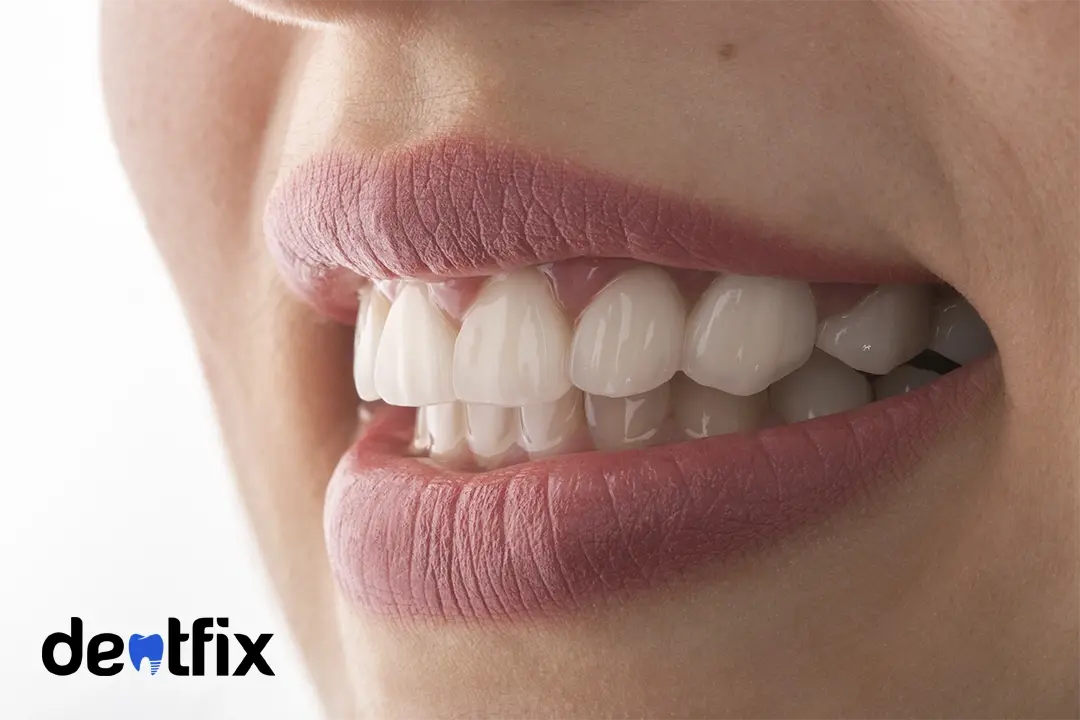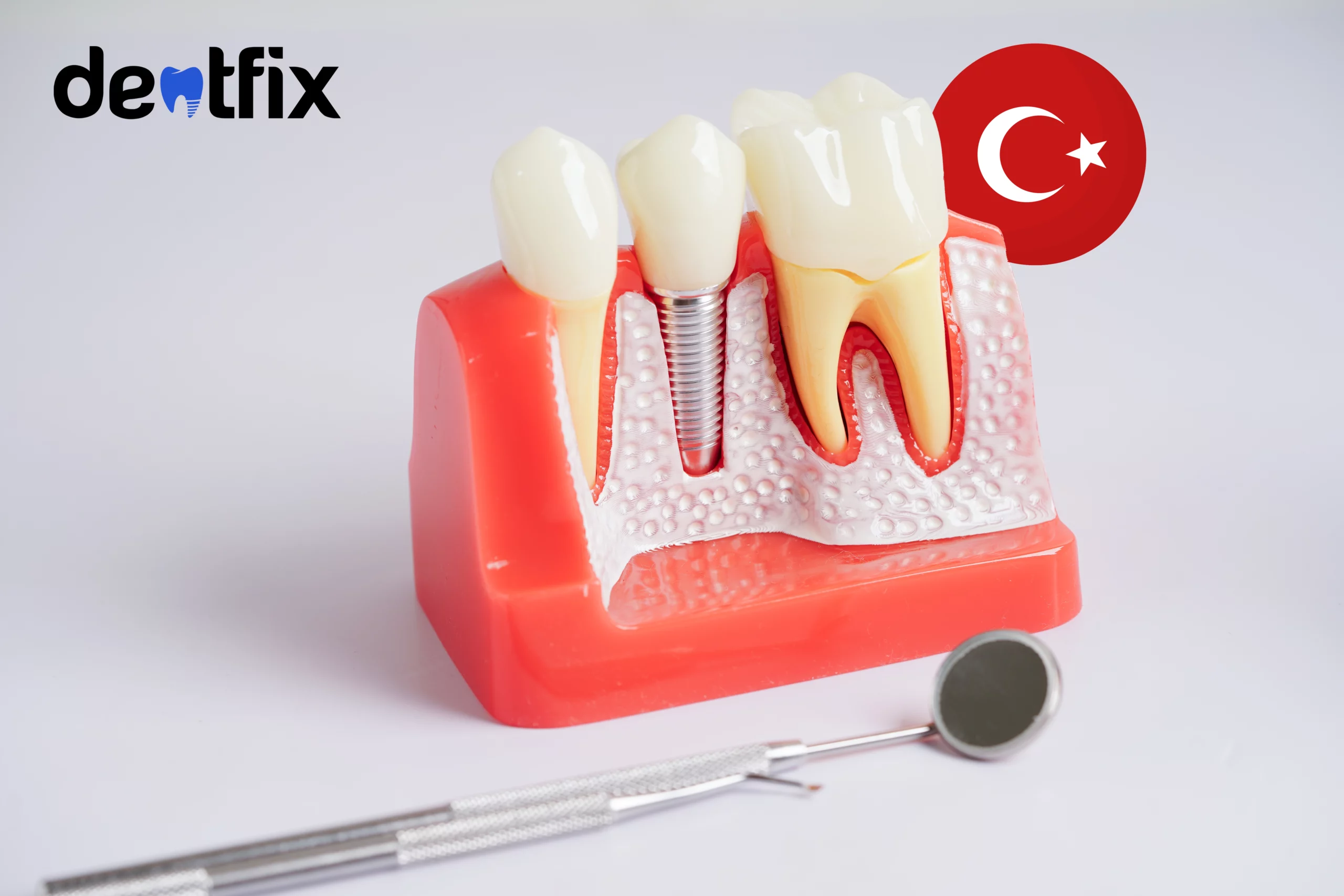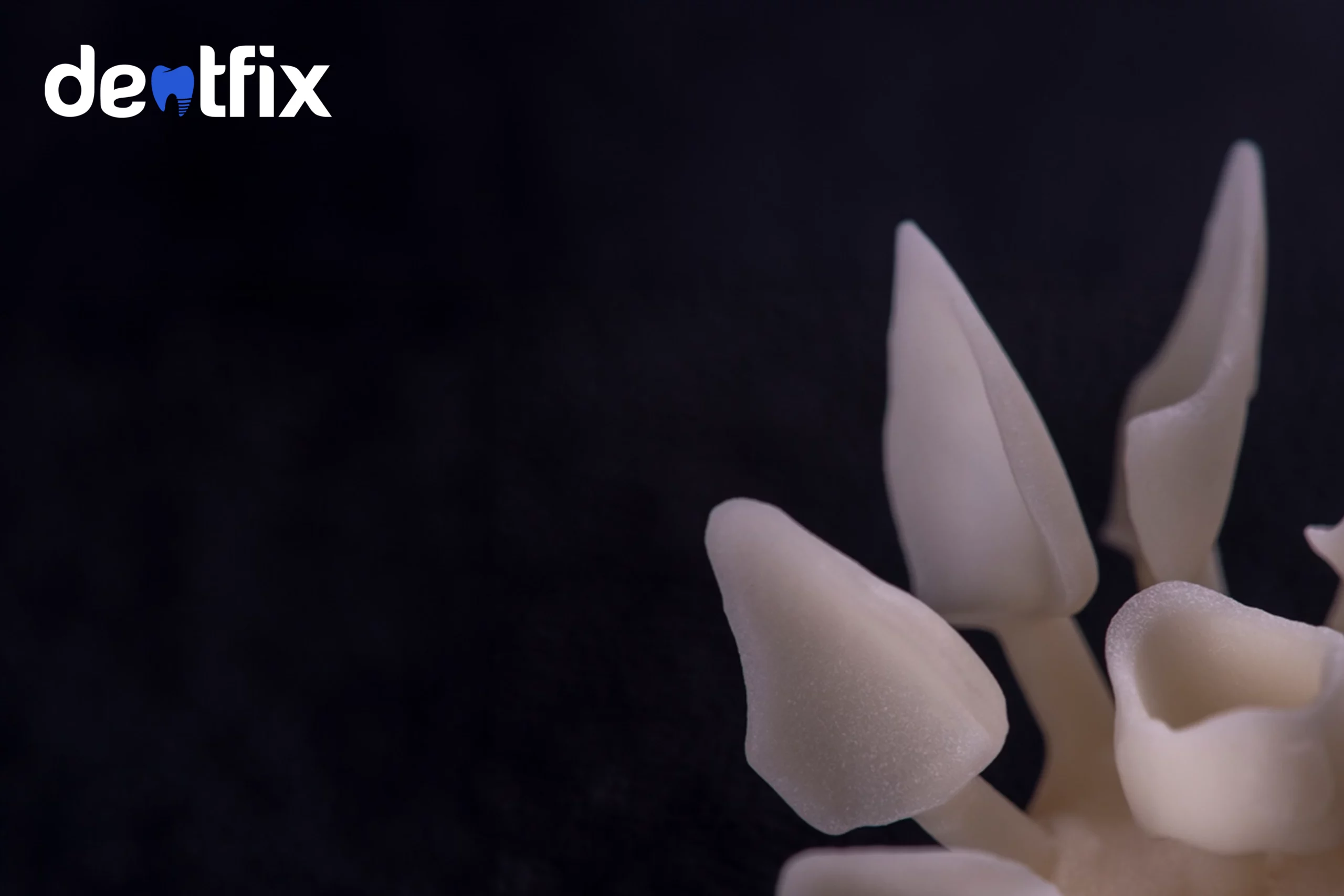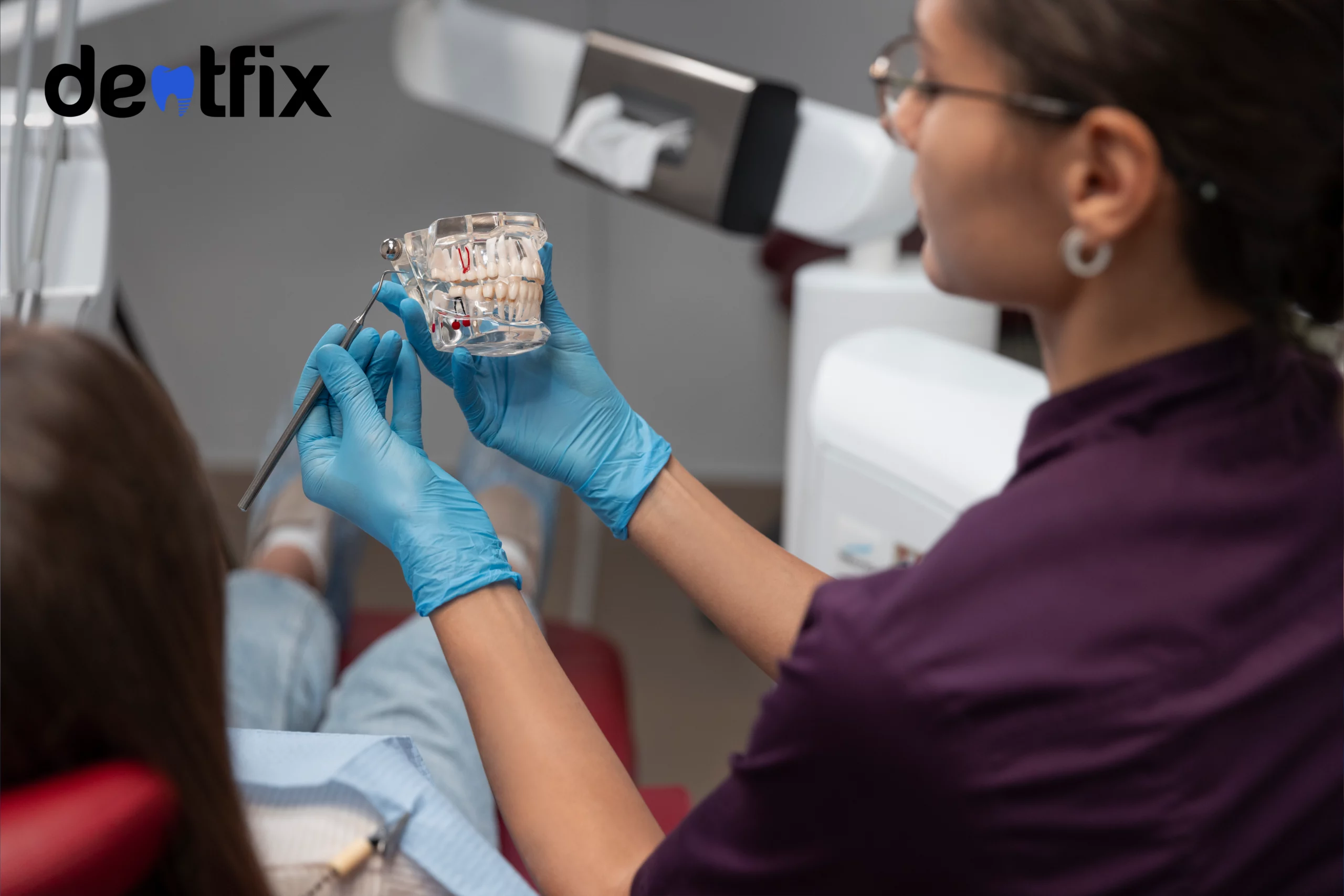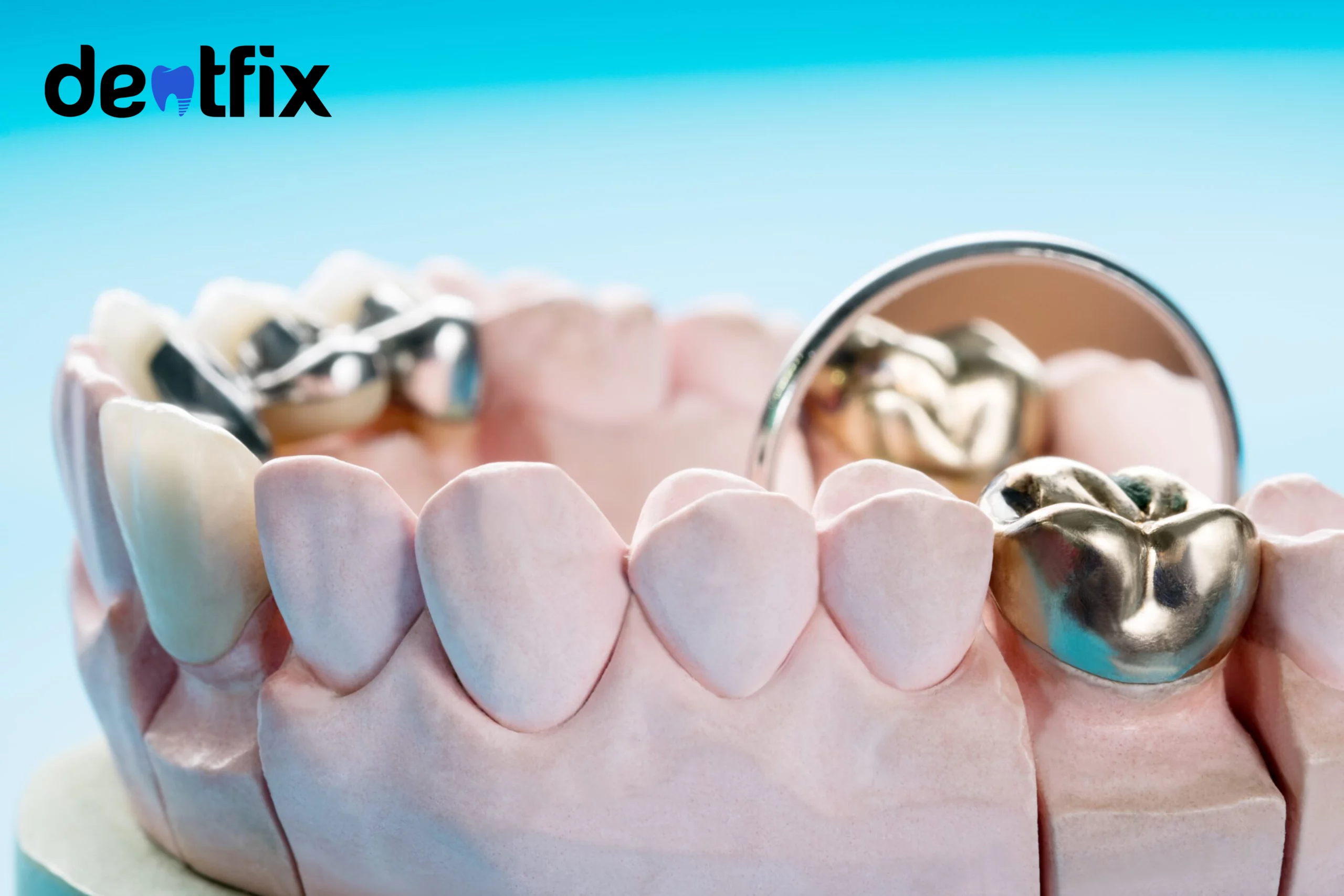Chapter 4
Welcome to the next chapter of Dentfix’s Teeth Whitening Guide: the chapter on teeth whitening side effects. In this chapter, we will go into all the details you need to know about when it comes to teeth whitening side effects. Here we discuss what’s normal, what’s not, and when do you need to seek professional help. The occurrence and severity of teeth whitening side effects differ from person to person according to their dental situation and the type of side effects. In any case, we think it’s important for you to know them all.
Teeth whitening side effects usually are hypersensitivity, gum irritation, tooth pain, and uneven shade. Most of them are usually just temporary and go away in a few days. Both professional and at-home whitening products cause certain adverse side effects but they tend to subside with time. This is why you need to discuss with your dentist any product you are about to use to avoid any severe complications. Although professional whitening causes side effects, it is still the safest and most effective whitening treatment.
Here is what you must know about the teeth whitening side effects and how it affects your dental health:
Side Effects of Professional Teeth Whitening
Office whitening is by far the safest and most reliable method of getting a white and bright smile because a dentist performs it. However, even in the safest environment like the dentist’s office, you may have some teeth whitening side effects. This is because to get the best result a chemical agent must be used, known as hydrogen peroxide. Their severity and occurrence of the side effects may differ from patient to patient and in normal circumstances, they subside within the first 48 hours. So now on to what are the most common side effects of teeth whitening?
- Hypersensitivity
- Gum Irritation
- Enamel Erosion
- Tooth Pain
- Uneven Shade
Choosing a qualified dental professional from cosmetic dentistry is crucial when seeking optimum results from your whitening treatment. We say this because if the dentist is not experienced and qualified, many short-term and long-term side effects can occur.
Hypersensitivity
Studies on the subject of teeth whitening side effects say that hypersensitivity and gum irritation are common side effects after professional whitening. However, this is temporary. The main reason for tooth sensitivity is exposure to high levels of hydrogen peroxide and carbamide peroxide. The bleaching agents alter the enamel and that’s what causes the teeth to be sensitive to high temperatures. The severity of tooth sensitivity depends a lot on the patient’s dental condition. For example, someone who already has sensitive teeth or poor oral health is more likely to suffer from high sensitivity after whitening. On the contrary, someone who looks after their teeth may just go through hypersensitivity for a week or two. Factors directly proportional to the severity of side effects in patients are treatment duration, peroxide percentage, etc.
After a standard professional teeth whitening session, tooth sensitivity should not last more than 48 hours or a maximum of 3 days. If it lasts longer than a week, it’s time to reach out to your dentist because something’s not right.
Gum Irritation
During a whitening treatment, safety gear is of utmost importance because it protects your gums and other areas of the mouth from bleaching agents. This is because a small number of bleaching agents, even diluted, may go around and temporarily irritate your gums. Gum irritation is one of the most common side effects and for one to feel mild irritation for at least a day or two is completely normal as the agent can be irritating for your gums. However, if it exceeds more than 48 hours or so, check with your dentist as soon as possible. People with tooth sensitivity are more at risk of gum irritation post-treatment. The American Dental Association advises dentists to avoid administering anesthesia during the treatment. It helps dentists detect when and if the bleaching material touches the gum tissue and starts to irritate the gums.
Enamel Erosion
A rare but possible teeth whitening side effect is enamel surface loss or enamel erosion. An enamel erosion during and after the treatment may occur because of excessive use of bleaching agents. The whitening formula normally contains fluoride, potassium nitrate, and calcium providing defense against enamel erosion and surface loss. In case the formula does not contain these agents, there is a higher risk of enamel loss. However, this side effect is rare and may occur only in cases of dental inexperience and patients with sensitive teeth.
Again the dentist you choose plays a super important role in the success of the treatment and minimization of side effects.
Tooth pain
Tooth pain after teeth whitening is normally temporary and does not last for more than 48 hours. This pain is a side effect correlated with enamel erosion, but how? If the dentist is inexperienced, the teeth are exposed and subject to outside agents. This manifests as tooth pain sometimes getting worst as time goes on. Many times people also feel mild pain or discomfort after teeth whitening. This is one of the less common teeth whitening side effects but it can occur at any point after the treatment. A common reason for this side effect is a thin enamel or other conditions such as gingivitis, periodontitis, cavities, etc. If someone is experiencing excruciating pain lasting more than 48 hours must consult their dentist right away.
Uneven Shade
This is one of the teeth whitening side effects that occurs usually when people get treatment with dental restorations. If a patient has restorations such as veneers, implants, crowns, etc. there can be shade differences. The whitening bleach does not change the color of restored teeth and as a result, the smile comes out uneven. Usually, dentists recommend against getting whitening treatments if a patient has veneers, implants, or the like. However, be prepared to face this side effect if you go for a whitening treatment with teeth restorations.
If you find that your teeth were not bleached after a professional treatment, even though you don’t have any dental restoration work, you might want to check out our article on why your teeth aren’t whitening for more information.
Laser Teeth Whitening Side Effects
Most in-office teeth whitening treatments nowadays are based on laser technology or blue UV light. Laser teeth whitening side effects or blue light teeth whitening side effects are the same as any other whitening method. The way teeth react to laser differs from person to person and so do the resulting side effects. The oral health of a patient matters a lot before attempting any kind of whitening treatment. For example, if a patient already struggles with dental problems such as cavities or severe sensitivity, side effects may be stronger. Similar to other methods, laser teeth whitening side effects include inflammation or irritation of gums, sensitivity to extreme temperatures, tooth pain, dehydrated teeth, and enamel thinning. For the most part, these side effects are manageable except of course there is an underlying issue that may worsen the situation.
Zoom Teeth Whitening Side Effects
There are many types of whitening treatments available these days. Zoom teeth whitening is one of them and is popularly known as a power bleaching method. Zoom whitening is an office-based whitening method and most dental clinics offer it nowadays. Like the other whitening methods, Zoom whitening can also cause certain side effects during or after the treatment. Zoom teeth whitening side effects include sensitive or painful gums, throbbing pain, tooth sensitivity, burning sensation, enamel changes, etc. The reasons why these side effects occur differ from person to person and their overall oral health. For example, someone who already suffers from sensitivity is more likely to experience pain or gum irritation. However, experienced dentists make sure they minimize this pain by using fluoride during and after the treatment.
Side Effects of Home Whitening Products
In latest years, a higher number of at-home whitening kits entered the market. Even if they contain a lower percentage of hydrogen peroxide, dentists note these products come with the highest possibility of side effects. This is because they are readily available and there’s no professional oversight while using them. Moreover, their safety is questionable because they contain bleaching agents, even if in lower percentages.
Here are the most common side effects resulting from using home whitening products. They’re not much different from the ones you may find in-office treatments but they come with a higher percentage and are sometimes more long-lasting.
- Irritated Gums
- Throat Irritation
- Sensitivity to extreme temperatures
- Teeth dehydration or dry mouth
Irritated Gums:
The first side effect people usually notice and the most common after using home whitening is soft tissue irritation. It usually occurs because the gums are exposed to hydrogen peroxide while using strips, trays, etc. Side effects resulting from home whitening products are usually less severe than professional treatments. It usually depends on the percentage of bleaching agents in the strip. A lot of times people use these products incorrectly or use them more than needed, thus exposing gums to bleaching solutions. This turns into irritated gums or irritated parts of your mouth.
Throat Irritation:
A side effect that’s usually unknown is throat irritation. Not many people think you may in fact ingest some of the whitening solutions during the process. This is going to irritate your throat. So this is why you may feel a scratch, sore and tingly throat for a day or two. If you feel this for over a day, get in touch with your doctor.
Sensitivity to extreme temperatures
Mild sensitivity after using whitening strips, trays, or pens is normal. It may last for at least a day with minor sensations later on. Ideally, it should not last more than 48 hours. You will notice sensitivity to very hot or very cold food and drinks. There can be many reasons why this side effect occurs but mostly it happens because of exposure to hydrogen peroxide. Another possible reason may be an allergic reaction to peroxides. Sometimes it is also because people overuse home whitening products and that leads to enamel erosion.
Teeth Dehydration or Dry Mouth
Another teeth whitening side effect people don’t know about is dry mouth or teeth dehydration. Bleaching agents such as hydrogen peroxide and carbamide peroxide once enter the tooth enamel can dry out the teeth. One of the rare side effects of whitening strips, trays, and pens is dry mouth or teeth dehydration. Since our teeth are porous, any strong substance can penetrate the enamel. In normal circumstances, this side effect subsides a few hours after use but if it continues, it is a red flag. If someone already suffers from dry mouth or xerostomia, it is better to not use any home whitening products without a dentist’s approval.
Teeth Whitening Strips Side Effects
Among the over-the-counter products, whitening strips are perhaps the most popular. There are also a large variety of brands available in the market. The most common side effects resulting from the use of strips are increased sensitivity, gum irritation, and tooth pain if placed over a cavity. This is why we particularly focus on the safety element because you can cause yourself long-term damage. It is far better to consult your dentist before the whitening process to avoid any adverse effects, a chemical reaction, or severe complications. For more information, you can read our article on why your teeth hurt after whitening strips, which also has some steps you can take to elevate the issue if you find yourself experiencing one of these side effects.
Teeth Whitening pen side effects
Another over-the-counter whitening product people use these days is a whitening pen. It does the same thing as a whitening strip but it is easier to use because it comes with a brush applicator. Firstly, like most of the other whitening products, teeth sensitivity occurs for at least the first 24 hours. The second common side effect resulting from the use of whitening pens is gum irritation. It happens because while using the product, people unknowingly often put the solution on their gums as well. Moreover, overuse of home whitening products including whitening pens causes many adverse effects such as dry mouth, tooth pain or discomfort, etc.
Home whitening trays’ side effects
Dental trays are fairly popular as home whitening treatment kits. The home whitening trays are not the same as the custom trays that a dentist gives after professional whitening. They are commercial products and come with various levels of hydrogen peroxide solutions or carbamide peroxide. Home whitening trays like the other products also end up causing sensitivity issues, soft tissue irritation, dry teeth, or throat irritation. However, the most common side effects are sensitivity and gum irritation. Most of the time it is because people use the trays and bleach incorrectly. As a safety measure, please talk to your dentist first because home whitening trays can severely affect the gums.
Teeth whitening side effects gums
Whitening treatments tend to first affect the gums because of the soft tissue present. Once the soft gum tissue is exposed to bleaching chemicals, they tend to get sensitive, swollen, and irritated. This is why during professional dental bleaching, dentists make sure the gum area is properly protected. It is completely normal for one to experience a bit of gum irritation after the treatment but if it persists for longer than 48 hours, it is an indication of a problem. It means your gums are reacting severely to the bleaching material and only your dentist can help you. Either way, talk to your dentist so that your post-whitening journey is smooth and healthy.
What are the ways to minimize hydrogen peroxide teeth whitening side effects?
Mild side effects after whitening treatments are normal but there are also ways of minimizing them. The first way of minimizing the side effects is dental cleaning. Cleaning before the treatment minimizes the chances of any complications during or after the treatment. The next simple way of minimizing side effects and any major complications is using desensitizing gel before the treatment. This is more important for individuals who have sensitive teeth because it helps minimize the effects of hydrogen peroxide during and after the treatment. Similarly, dentists recommend using fluoride gels or toothpaste to minimize post-treatment sensitivity.
If you want to learn more about things you should avoid after a whitening treatment to minimize the risk of side effects, and keep your smile bright for a long time, check out our article on what not to do after teeth whitening!
References
